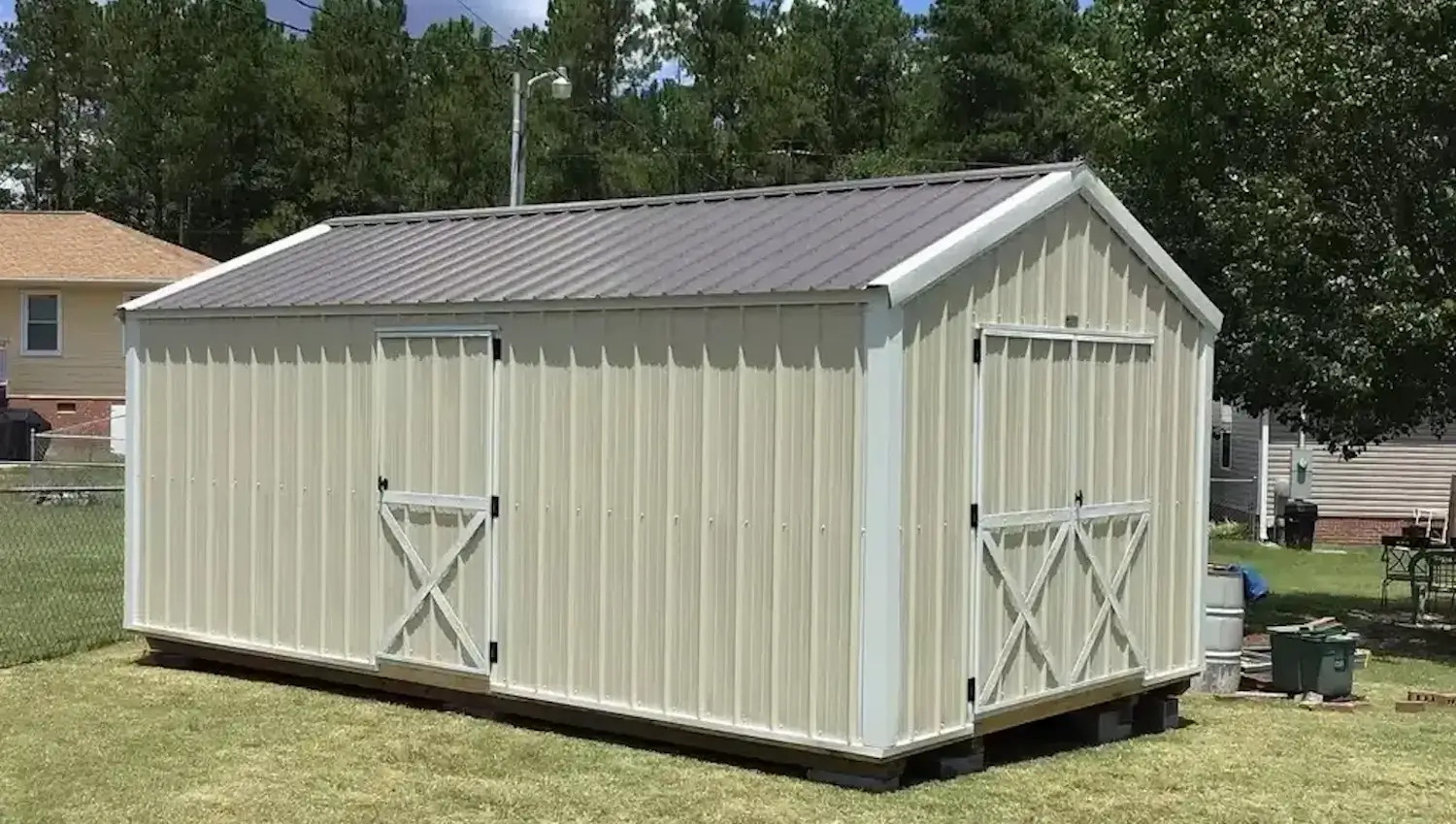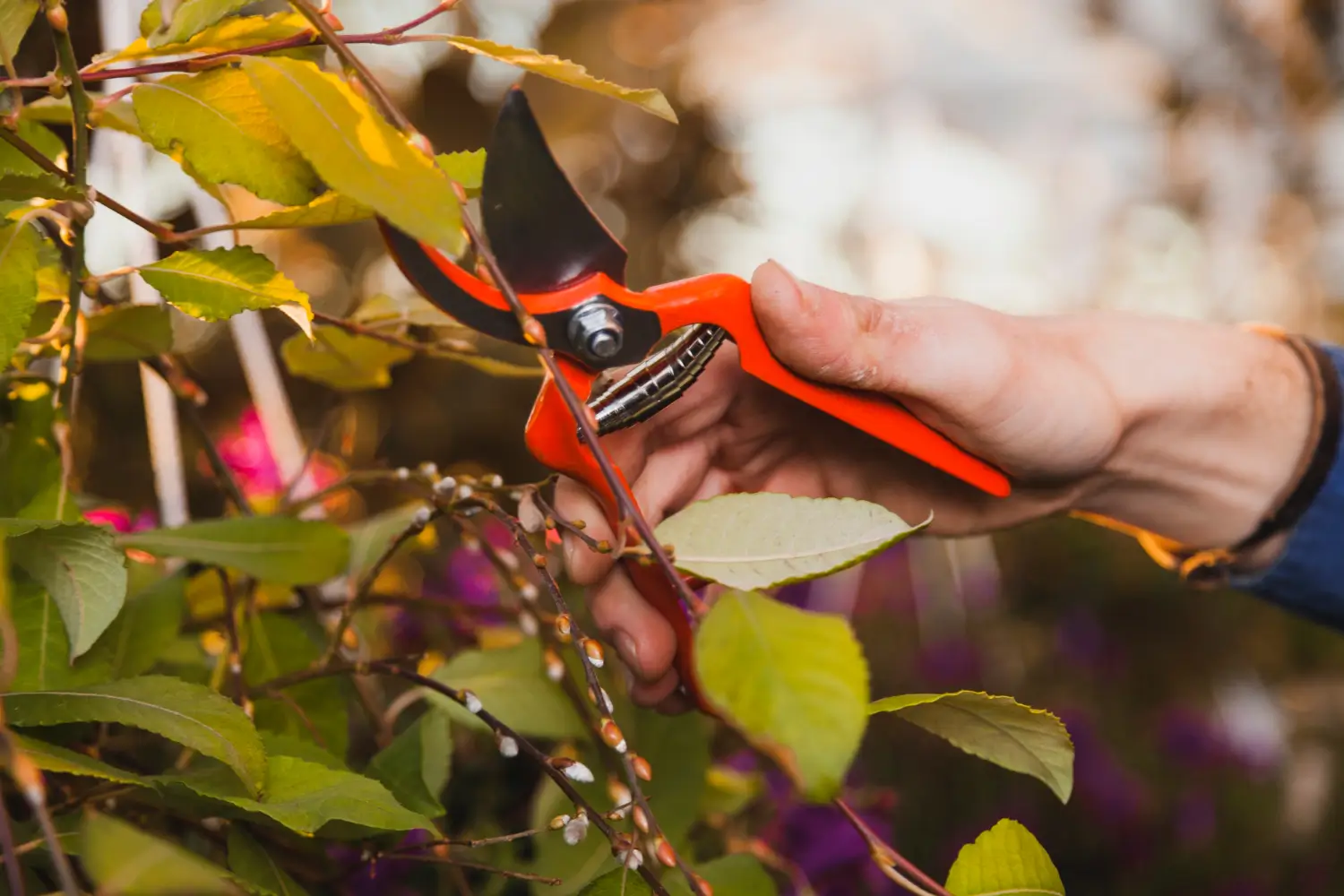
August 24, 2025

Overgrown shrubs and tree branches heading in every direction can turn a garden into a jungle. Many gardeners attempt to solve the problem by using small hand pruners, but thick branches can be difficult to cut with these and often leave them feeling tired and frustrated. The work gets slow and difficult, and it takes the joy out of gardening.
Loppers are the tools that make this so much easier. And with their long handles and powerful leverage, they can even cut stubborn branches with minimal effort. Gardeners can make clean cuts that help the plant stay healthy and the garden look neat. The right pair of loppers can transform pruning from an arduous chore to a simple, enjoyable task.
Loppers are big pruning tools with two handles and powerful cutting blades. They are meant to do bigger trimming jobs on branches typically ranging from ¾ inch to 2 inches (up to about 5 cm) in diameter. While small hand pruners are best for thin twigs and soft stems, loppers have long handles that offer extra power and reach.
They are a cross between pruners and saws. Pruners are great for fast, small cuts, but lack the power to tackle harder wood. Such thick branches can be pruned with saws, but it takes more time and effort. Loppers bridge the space, providing more leverage and cutting power than pruners, but are easier and faster to use to cut through midsize branches than saws.
Gardeners love loppers because they make pruning faster, less fatiguing, and better for a plant’s health.
Not all loppers are the same. Various cutting systems are used for cutting various types of wood. The right type makes it easier for a gardener to work faster, protect plants and not need to strain their arms.
Bypass loppers operate as giant scissors. Two curved blades pass one another to produce a clean cut. They are ideal for cutting through live, green wood, including fresh branches and shrubs.
Advantages
Best use: General pruning of healthy plants and shaping shrubs. Gardeners should also inspect the blade angle, as a blade that is properly angled will make cleaner cuts and result in healthier plants.
Anvil loppers have a single sharp blade that closes to a flat surface, called an “anvil.” Instead of cutting, they smash the branch against the anvil.
Advantages
Caution: When used on live branches anvil loppers can crush and cause damage to the plant. They're best used for hard or dead wood.
These loppers accomplish this with the help of gears or a special chained linkage system, multiplying the strength of the gardener. It requires less power to cut through a thicker branch simply because the mechanism gets more powerful more easily.
Advantages
Best use: Middle and heavy duty tree loppers where added cutting strength is required.
Ratcheting loppers cut in stages. The blades close and lock, and the gardener then squeezes again until the branch is severed. This process is very effortless.
Advantages
Best use: Pruning stubborn or older growth that is too thick for bypass or gear loppers.
Telescopic loppers feature extendable handles so the user can increase their length as necessary. This makes it that much easier for gardeners to reach high branches without the use of a ladder.
Advantages:
Considerations: The longer handles can cause these loppers to be heavier and more difficult to manage. Gardeners must keep in mind balance and handling.
Gardeners selecting loppers should consider more than just the blade. The best tool is a tool that fits the job, and also fits the person using it. Here are some key features to consider while shopping for quality loppers.
Handle length directly affects leverage. With the longer handles, users have more cutting power making it possible to cut through new or thicker branches. But extra length also means added weight, which can become cumbersome during extended sessions of pruning. Shorter handles are lighter and easier to control, but not necessarily powerful enough for big cuts. Materials also matter.
Most loppers are built for branches that are ¾ inch to about two inches thick. Beyond that, a pruning saw is a more useful tool. The type of cutting system is also important:
Comfort is a big deal, especially during long sessions of pruning. Good loppers often come with:
A good lopper should last for years, with the right care. Signs of durability include:
When using loppers, the right balance is crucial. A well balanced tool should feel comfortable to use ergonomic garden loppers, while an overly heavy one can lead to fatigue. Geared or compound-action loppers may be weightier, but they require less muscle work for a cut, making them easier overall for heavy pruning tasks.
Loppers vary widely in price. Low-cost models may be tempting, but they can dull fast or lack edge quality. Better-quality loppers are more expensive, but they generally have sharper blades, more solid handles and replaceable parts, which make them a better long-term investment. For many gardeners, the best advice is to buy the highest quality they can afford, aiming to strike a balance between the price and how often and heavily the tool will be expected to work.
A good lopper makes all the difference when trying to maintain a healthy and well-shaped garden. Growcycle provides various kinds of high quality loppers and parts which have been designed to satisfy pruning requirements.
The Organic Lopper 20″ is designed with sustainability and simplicity in mind. It has a sharp, hardened steel blade that provides clean, exact cuts, which is crucial for maintaining the plant's health.
Its overall weight and ergonomic design minimize strain and ease the burden of prolonged gardening. This model is constructed with environmentally friendly materials and it is ideal for gardeners who are looking for a reliable lopper that also supports organic gardening.
Bahco is a name that has been a staple for years when it comes to pruning, and the 36″ lopper is no different. Designed for precision and control, it combines a slender blade with a hooked counterblade that allows it to reach into dense shrubs and perform more delicate pruning tasks with ease.
The added length allows for reaching deeper into dense foliage and to lever up branches that are less accessible. This makes it a popular selection for garden work or anybody dealing with mature trees.
For those who already own a Bahco lopper, having a spare blade on hand will ensure it stays sharp and the lopper remains reliable. The 30″ Bahco lopper replacement blade has been made of durable steel to perform just like new.
A new blade means the lopper is going to last longer, which is a useful investment for anyone using their tools in the garden on a regular basis.
The Corona ComfortGel Lopper is designed with the comfort of the user in mind. Its ultra-comfort ComfortGel grips reduce hand and wrist stress while cutting. This comes in handy when a gardener has a long pruning task or has difficulties with hand strain.
Though concentrated on comfort, the Corona model does not compromise its performance and it makes clean and smooth cuts to keep shrubs and trees in perfect condition.
For a premium tool that gardeners can use for years to come, the Felco 20″ lopper is ideal. Small but mighty, it can slice through branches of up to 35 mm in thickness with little resistance. Its forged aluminum handles, rubber shock absorbers and padded grip make it strong and comfortable to use.
With Felco's legendary durability and a lifetime warranty, this lopper is an investment for serious gardeners who demand the best performance, year after year.
A quality pair of loppers will last for decades if properly used and maintained. Learning the proper skills and how to take care of the tool will make the process of pruning far easier while ensuring that the tool remains sharp, safe and efficient.
Make sure to use sharp loppers in order to make a clean cut. A sharp blade severs cleanly, without tearing, where plants will heal quickly.
This is recommended to prevent the bark from ripping and protect the plant.
Make sure to put on gloves to cover your hands from blisters and cuts.
After each use, the blades should be wiped down clean, especially if they become sticky from sap. A mild soap and a damp cloth do the trick.
Loppers are a must-have for every gardener. They help to prune faster, simpler, with less fatigue, and help the plants grow better. Loppers, with their lengthy handles and slicing blades, have more power than hand pruners but are less cumbersome to use than a saw. There are different models of loppers for different tasks. The right type, handle length and blade quality and comfort make a difference so that gardeners can get the best results.
At Growcycle, gardeners have an array of loppers to choose from. They even include replacement blades so the tools stay sharp and ready to use. Both are meticulously engineered to make cutting more comfortable and efficient.
Disclaimer: This material is for informational purposes only and should not be relied on for legal, medical, financial, or any other form of professional advice.
The best loppers vary according to the task. For everyday pruning, bypass loppers are great. For thick or dead wood, use anvil, geared, or ratcheting loppers. Top premium brands of garden pruners include Felco, Bahco, and Corona due to their durability and longevity.
Bypass loppers deliver clean, scissor-like cuts and are ideal for live, green wood. Anvil loppers crush up against a flat surface and are best for dead, dry branches.
Wipe down the blades and then use a sharpening stone or file to track the blade’s original bevel (it started out at 20–25°). Always sharpen in one direction. Complete by wiping the blade dry and applying a light oil to prevent rust.